Batting Cage Buyer's Guide
Contents
Click to Jump to Section
Looking to improve your batting skills or create the perfect practice space at home? You’re in the right place!
Finding the right batting cage can sometimes be overwhelming, so we created a batting cage buying guide to help you find the right one! Whether you need a batting cage for your backyard or your College baseball field, we have you covered. Check out our collection of batting cages for sale here!
Why Do You Need a Batting Cage?
Whether you're a hobbyist, a parent, or an aspiring athlete, owning a backyard batting cage improves your performance in ways other practice methods can't achieve. Let’s explore a few of them:
1. Convenience and Accessibility to Practice
A personal batting cage eliminates the need to rely on local facilities. Waiting for an available cage or traveling to a sports complex can be time-consuming. With a batting cage at home, practice becomes easy, anytime, and on your schedule. For families, this convenience provides consistent training opportunities for kids who wish to develop their game.
2. Consistent Skill Development
Imagine a youth player practicing weekly versus one who trains daily. This consistency fosters muscle memory, sharpens reflexes, and builds discipline and confidence. This is what a personalized batting cage can help you achieve. You can achieve steady improvement without restricting practice to seasonal or facility-based schedules.
3. Customizable Practice Options
Every player focuses on different aspects of improvement, such as perfecting their swing, increasing pitch accuracy, or building hand-eye coordination. A batting cage allows you to tailor each session to meet your specific training goals. You can also add other essentials, like pitching machines or adjustable nets, to simulate game scenarios effectively.
For instance, if you're working on hitting curveballs or perfecting soft toss, you can easily customize your setup to match these needs. This versatility accommodates individual training regimens for both younger athletes and seasoned players.
4. Long-Term Cost Efficiency
Although the upfront cost of a batting cage may seem huge, it's a cost-effective choice over time. For instance, you can cut costs on regular trips to sports facilities or membership fees.
It also goes beyond the monetary gains. Practising more frequently improves one's skill set, making one a better player.
5. Building Discipline and Work Ethic
Having a batting cage encourages disciplined practice habits.
When sessions are accessible and manageable, players tend to take training more seriously. The sense of ownership over a personal equipment setup fosters responsibility and motivates players to commit to consistent practice schedules.
For young athletes, the presence of a batting cage teaches valuable lessons about time management and self-improvement.
|
Reasons to Own a Batting Cage |
Benefits |
|
|
|
|
|
|
|
|
|
|
What Are the Different Types of Batting Cages?
Here’s a breakdown of the main types, along with their features and use cases.
1. Freestanding Batting Cages:
Freestanding batting cages are standalone structures supported by metal poles or frames covered with a netting enclosure. This is a good start if you're seeking a cost-effective and adaptable option, as they work well for casual or beginner-level players.
Pros:
-
They’re portable and easy to set up
-
You can relocate them as needed, and they’re often more budget-friendly than permanent options.
Cons:
-
Freestanding cages lack stability in extreme weather conditions
-
They offer limited space for training
-
They require periodic maintenance
2. In-ground batting Cages:
In-ground batting cages are permanently integrated into the ground using poles or frames anchored with concrete footings. They are best for long-term use in dedicated training spaces, especially for advanced players or team practices.
Pros:
-
In-ground cages provide excellent stability and longevity
-
They have customizable designs that allow you to match specific training needs
-
They’re safer, reducing the risk of tipping or collapsing during use.
Cons:
-
Installation involves more labor and time
-
Costs are higher for materials and professional setup services.
3. Attached Batting Cages:
Attached batting cages connect to an existing structure, such as a garage, barn, or shed. These cages suit areas with limited backyard space, but proximity is a priority.
Pros:
-
They maximize space efficiency by attaching to an already available area.
-
These setups provide added protection from the elements
-
They’re easy to access, especially for frequent training.
Cons:
-
You need a suitable structure for attachment
-
Modifying the existing property might incur extra expenses.
4. Portable Batting Cages:
Portable batting cages are lightweight, mobile structures for baseball and softball training. Unlike permanent cages, they can be set up and taken down quickly, making them ideal for backyards, parks, or training fields.
Pros:
-
The lightweight materials make them more straightforward to assemble and disassemble.
-
These cages are among the most affordable
-
They’re often smaller in size and fit multiuse backyard areas.
Cons:
-
They’re less durable and don’t perform well in harsh weather conditions.
-
Over time, the materials may deteriorate faster compared to permanent setups.
Factors to Consider When Choosing a Batting Cage
Choosing the right batting cage involves evaluating several factors, including skill level, usage frequency, and available space. Understanding these aspects ensures the setup meets your training requirements and enhances your practice sessions effectively.
Let’s discuss each point in detail:
1. What is Your Skill Level?
Your skill level strongly impacts the length and design of the batting cage you need. Over time, skill progression might require cage adjustments. When prioritizing flexibility, opt for modular designs to accommodate evolving training demands.
-
Advanced Players:
Longer cages, typically 55 feet or more, are essential for advanced-level training. A 70-foot cage is standard for college and professional baseball players since it provides ample room to track ball flight and velocity.
-
Younger or Beginner Players:
Cages measuring 35 to 55 feet are ideal for players focusing on fundamentals and hand-eye coordination. These shorter options are space-efficient and meet the needs of developing players, making them suitable for youth setups. You can shop young kids batting cages with us.
2. How Often Will You Use the Batting Cage?
Your cage's durability and materials should match the frequency of use. For example, if you train daily or several times weekly, invest in premium-grade materials. The frames must also withstand consistent use and environmental conditions, especially if it will be an outdoor cage. Look for weather-resistant coatings and UV-protected netting to improve longevity.
For less frequent sessions, go for mid-range cages that balance quality and cost. These options are suitable for residential settings or casual player training.
3. What Are Your Space Constraints?
The space you have determines the size and placement of your batting cage. Large areas allow for full-sized setups, ranging from 55 to 70 feet. These provide versatile training with enough room for pitching and defensive drills. Remember to account for additional space for poles, which extend approximately 12 inches beyond the cage size.
Shorter cages (35 to 55 feet) are better suited to confined indoor areas. If your space is shared or has dual purposes, choose collapsible or portable designs to maximize flexibility.
Tip: Measure your location precisely before purchasing to ensure optimal fit and functionality. Proper planning prevents improper installation and maximizes training benefits.
4. What Type of Installation Will You Choose?
Decide whether you need a portable or permanently installed batting cage. Portable models with lightweight frames and flexible nets are perfect for multi-use spaces and seasonal setups. They are also easily transportable and can be stored when not in use.
On the other hand, permanent batting cages are secured with concrete footings and anchored frames. They are best suited for dedicated training facilities or backyards with ample space.
5. Your budget:
While cost is always a factor, investing in a high-quality batting cage can save money in the long run. Cheap, low-quality cages can wear out quickly or may not withstand heavy use.
Instead, strike a balance between affordability and durability. Assess features such as net thickness, UV protection, and frame stability before making a final choice. We also have a budget batting cages collection that you can consider.
How to Choose the Right Size of Batting Cage
Selecting the appropriate size for your batting cage ensures it meets training needs and fits your space. Here are some points to consider:
1. What Size Batting Cage Should I Get?
Length, width, and height are all essential elements to review when you’re in the market for a new cage. If you plan on using it at home in your backyard, odds are you don’t want a cage that will take up most of that space.
If you have room for a larger size, you should utilize it and choose one for maximum efficiency when stepping up to the in-cage plate.
Batting Cage Length
As stated earlier, batting cages come in many shapes and sizes to suit almost anybody’s needs. The length of the unit is crucial to measure a batter’s performance.
The standard batting cage length is 70 feet. This allows ample space between the pitcher or pitching machine and the batter. It also allows greater accuracy in tracking the ball's velocity of hits. If you don’t have a yard large enough to fit a full-sized cage, no worries. Cages come in lengths as little as 20 feet, which can still provide a beneficial practice experience.
See the chart below:
If you don’t want to commit to a regulation-sized batting cage length, it’s okay. Though the regulation length is excellent for practicing since it creates a realistic scenario, not everyone has room for a 70-foot batting cage in their yard.
Shorter cages are great for saving space and money and can even improve a batter’s reaction time. Since the distance between the pitcher and the batter is shortened, the batter must react quickly. This translates to a regulation setting, as the batter can use their skill advancements to respond quicker to pitches.
A shorter cage can also aid a batter’s accuracy by forcing them to act quickly and swing more precisely to make contact with the ball. If you're unsure how long your batting cage should be, check out our ideas and inspiration collection here.
Batting Cage Length Recommendations Based on Age and Skill
|
Age |
Length |
|
|
|
|
|
|
|
|
Tip: If your yard isn’t big enough to accommodate these recommendations, don’t worry. Practicing your swing in a 20’ cage is better than not practicing at all!
Batting Cage Width
The standard width for batting cages is around 12 to 14 feet. Younger players who are still developing their skills will find sufficiency in 12-foot wide tunnels. Bigger, more advanced players will be better off with a 14-foot wide tunnel. Width also varies from player to player depending on wingspan, so if you or your batter have longer arms, consider a wider cage. Read more in our guide for preparing your child with batting cages for travel ball.
Batting Cage Height
Most players will find a 12-foot high batting cage sufficient for their needs. Longer cages provide optimal room for tracking ball velocity off hits, and so does a greater height. If 12 feet is a bit more than you can handle, an 8-foot tall batting cage frame should work fine.
Another consideration is that the height of the frame also depends on which netting you plan to use for your cage. You want to ensure enough room for batting cage netting overflow – add one foot of extra netting to sag on the ground. This will help contain balls as they fly around the cage.
2. What Material Is Best for a Backyard Batting Cage?
Choosing the right batting cage frame doesn’t end at batting cage size – the material used in the frame’s construction is just as important. There are three primary materials used to make up a batting cage: Fiberglass, Fiberglass with Steel Rods, and Full Steel. Each type has its advantages and disadvantages.
Fiberglass, for example, can shatter from the impact of a direct hit fast-traveling ball due to a powerful hit. On the other hand, full steel frames will hold to their original form against the hardest of hits and can withstand harsh weather conditions, such as high winds.
Let’s take a deeper look into what each material brings to the table:
Fiberglass
Fiberglass is the least expensive of the three materials. Lower-priced batting cages are typically made of fiberglass and frequently are not regulation size, but this isn’t always the case.
Frames made from fiberglass material, particularly the rods or poles, can shatter from the impact of hard-hit balls. This is why it’s considered one of the “cheap” options – though it’s an excellent choice for younger players who are working on developing their eye-hand coordination and swing power.
Cost: The starting price for cages made with a fiberglass structure is about $100, but depending on their size and other features, they can range up to $1,000. Fiberglass construction is not commonly used in models that are more expensive than a few hundred dollars.
Who it’s best for:
-
Smaller, younger players are starting to advance their skills and don’t hit the ball with much power.
Fiberglass With Steel Rods
The perfect balance between quality and affordability. The upright poles, called rods, are made from steel. This provides a highly durable support structure that can handle direct ball hits from heavy hitters.
The framing surrounding the ceiling is made from fiberglass, which offers a discounted price from the full steel construction option.
Cost: The hybrid design offers higher durability and a longer lifespan than an all-fiberglass construction. Its price range starts at about $300 and can go as high as $1,000.
Who it’s best for:
-
Though it can be used by players of most ages, sizes, and skill levels, a fiberglass frame with steel rods is best for developing players between Little League and high school who can hit the ball with moderate power.
Full Steel
The most durable and toughest design is the full steel construction. Both the framing and the rods are made of steel, which makes them super tough and allows them to stay intact against the hardest-hit balls. Because of the increased durability, greater sturdiness, and longer-lasting life, it is the most sensible investment if you can afford the higher price tag.
Cost: Considering other variables, the price of a full steel construction can range from as little as a few hundred dollars to as high as $2,000, but it’s well worth the investment.
Who it’s best for:
-
High-caliber players can put a lot of power into each hit. They usually play at the high school level and higher, though the durability and reliability of full steel construction can't be beaten.
3. Pick the Right Batting Cage Net
The netting you choose to put over the top of the frame is another important aspect. There are a few considerations here:
-
The cost of a net shows its quality. This is a standard truth among the batting cage netting industry.
-
Multiple styles of netting exist for different types of activities and requirements. Choose a net style that meets your needs.
-
The type of net twine used determines the durability of the netting, the effectiveness of its intended purpose, and the diameter of the meshing that makes up the net itself.
Nets come in all shapes and sizes, so which one is best for you? Let’s discuss that in detail:
Batting Cage Net Cost and Quality
The phrase “what you pay for is what you get" directly applies to baseball nets. Low-priced nets, whether new or used, are (likely) low quality. This doesn’t mean that nets can’t be both good quality and affordable, though.
A good practice is to weigh your options by researching manufacturers and distributors. Consider how their nets are made and what type of material they use.
Tip: The size of your net completely depends on the length, width, and height of the cage’s frame. So, ensure to know the specifications of your frame before purchasing a net.
Net Styles
Barrier/Containment Nets
As its name suggests, this primary style of netting provides a barrier that contains balls so they don’t fly out and affect surrounding buildings or objects. These nets are commonly used in baseball facilities, golf courses, and backyards. Barrier nets consist of four walls – two sides and two ends – and a ceiling that sits over the cage like a fitted blanket.
They also offer an excellent opportunity for batters to practice their hand-eye coordination, as the pitcher has to be within the length of the cage’s parameters and will determine the accuracy of ball flight tracking if appropriately designed.
Tip: Be sure the netting you select has a proper mesh diameter to prevent balls from slipping through and escaping the cage’s interior.
Batting Cage Net Types
Once you’ve decided on a net style, consider durability, mesh diameter, and lifespan. The net twine determines each of these elements.
Net twine is measured in numbers, with smaller numbers indicating a smaller diameter in the mesh construction of the netting and vice versa. Along with mesh diameter, the higher the number, the more durable the netting will be. The durability determines its ability to withstand weather, wear and tear from usage, and lifespan. Lastly, higher numbers reflect better quality, which in turn will drive the price.
Here are the four most common types of net twine:
1. #21 Netting
This netting can survive in most weather conditions and is durable enough to hold its own against a fair number of hits. It’s recommended for light home use or young stars learning the ropes of batting. The thin net and small mesh diameter make it ideal for moderate use by the youngest players and will last approximately 3-4 years.
2. #30 Netting
This is a tougher net than the #21 netting offers a greater mesh diameter to withstand harder hits by bigger players. It is recommended for Little League players who have the fundamentals and are transitioning into a stage of skill advancement. The netting provides greater durability and can withstand harsher winds and cold weather. Its lifespan is approximately 4-5 years.
3. #36 Netting
A great middle-ground net twine that can be used by most ages and player levels – though mostly recommended for high-school level players. It’s tough, has a large mesh diameter, and will survive most weather situations. Its thick net also extends its lifespan, which is approximately 4-5 years.
4. #42 Netting
The holy grail of batting cage netting is the #42 net twine. This is the strongest, thickest, largest, and most durable netting of all options. It can survive nearly any weather conditions and withstand many hits from the hardest hitters. The larger gauge of mesh diameter gives it long-lasting use, with its lifespan being 5+ years.
How Much Does a Good Batting Cage Cost?
A good batting cage can cost anywhere between $200 and $10,000. For smaller backyard batting cages, the average cost is around $1,000. For outdoor commercial batting cages, expect to spend $5,000 upwards.
Residential batting cages are usually designed for younger players and will see less usage than a full-sized commercial batting cage.
What Are the Long-Term Costs Associated with Batting Cages?
Although upfront costs are essential, long-term expenses can affect your overall budget. Planning for these expenses helps you make informed decisions and avoid unexpected costs. Some of them are:
-
Netting Replacement: Nets may wear out over time. For frequent use, durable commercial-grade materials like polyethylene reduce replacements but can still cost $200-$600 every few years.
-
Accessories: Depending on their quality and compatibility, installing pitching machines, batting mats, or mounds costs approximately $200-$1,500.
-
Maintenance: Maintaining frames and nets ensures longevity. Outdoor cages might incur costs for weatherproofing or rust-resistant coatings.
-
Shipping: Many suppliers charge for shipping (around $50-$150 or more) for larger setups, which requires upfront budgeting. We offer free shipping!
Can You Install the Batting Cage Yourself?
Yes, you can install a batting cage yourself with the right resources and guidance. Many DIY kits simplify the process by including the necessary hardware and step-by-step instructions. These kits are ideal for those with basic construction skills.
Hire an expert to handle advanced setups or custom cage designs to prevent structural issues or hazards from arising in the future.
What Regular Maintenance is Required for Batting Cages?
Regular maintenance keeps your batting cage functional and safe for use:
-
Check the frame for wobbling, leaning, or loose bolts, and tighten or replace them as necessary.
-
Look for frayed or sagging areas in the netting, and repair or replace damaged sections promptly.
-
Ensure ground anchors are free from rust or corrosion, especially in moisture-prone areas.
-
Using a soft brush or broom, remove debris from the netting, such as leaves, dirt, or particles. This prevents material degradation from accumulated debris.
-
If your cage is outdoors, use UV-resistant netting to prevent sun damage and consider a tarp or cover during harsh weather.
-
Test any additional equipment, such as pitching machines, to confirm they're in working order.
Tip: If you use the equipment frequently, perform maintenance checks monthly ot bi-weekly.
Conclusion
This guide should have equipped you with enough knowledge to find the perfect batting cage for your needs. You learned the importance of frame length, height, width, and material and how to select the best netting to complement your chosen frame.
It’s important to remember that batter requirements vary among different player sizes, ages, and levels of development. No matter your criteria, you can rest assured that the right batting cage for you is out there.
Have questions about which batting cage you should buy? Reach out to us, and we’ll be happy to help you, or check out our best batting cage blog for more info!

 Contact Us
Contact Us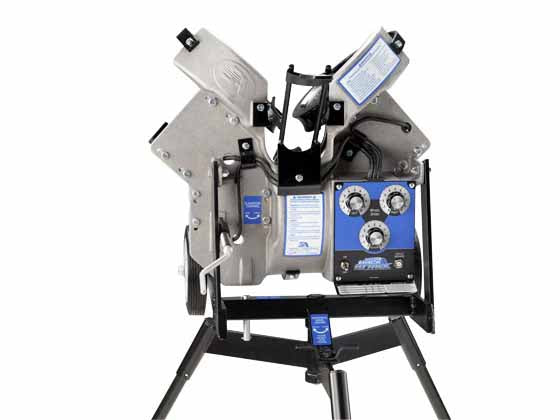
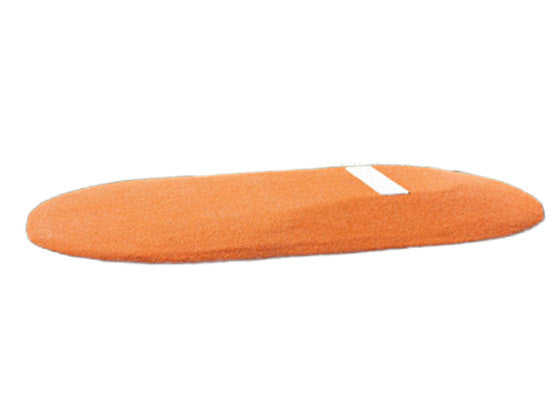
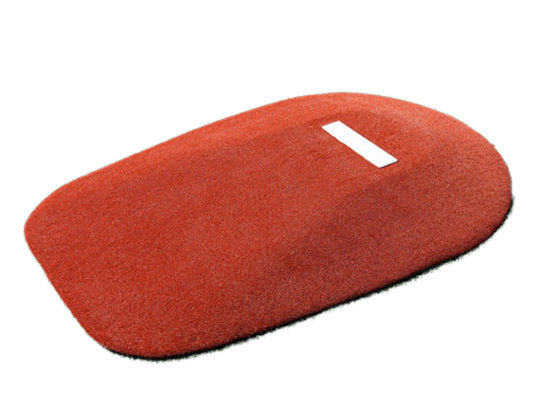
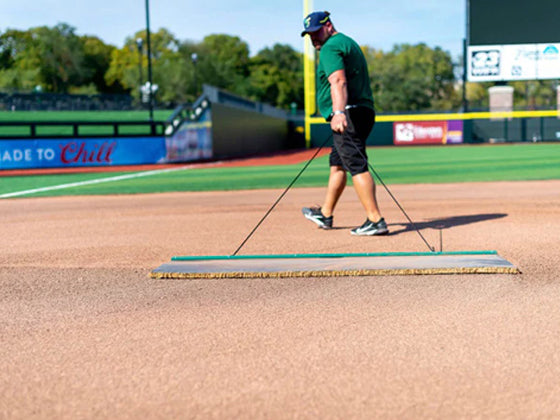

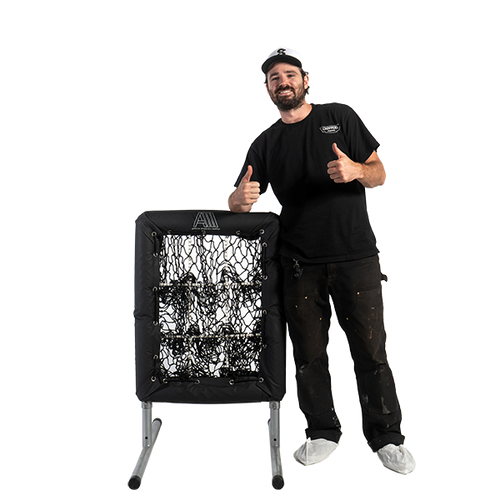

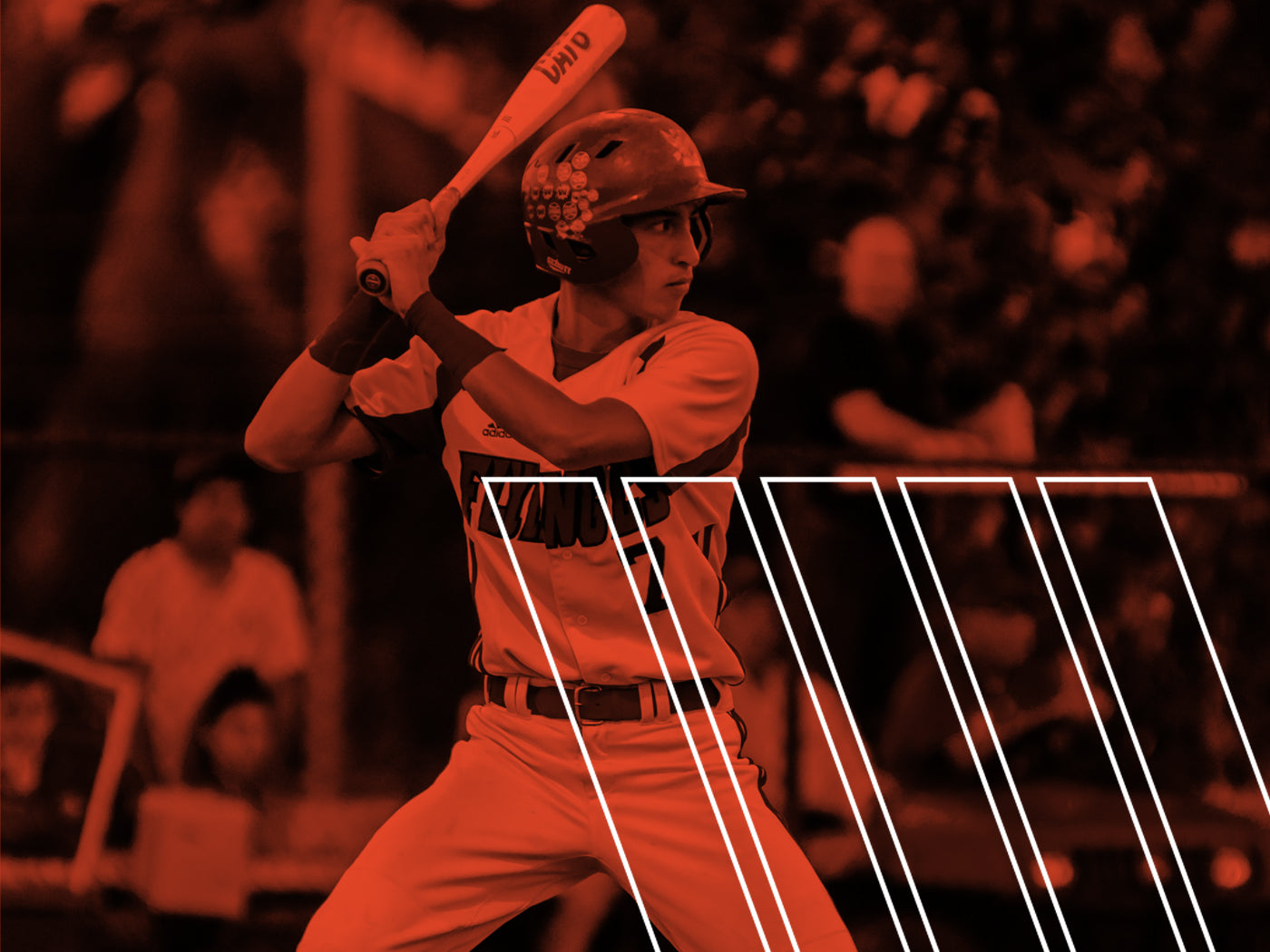

1 comment
Paul DeLave
Hello- I am an architect working on a renovation project at Georgetown University in Washington, DC. Could you please tell me the typical size of an NCAA- compliant batting cage for indoor use. I know there are many different sizes, but could you tell me the most common width/height? Thank you.
Hello- I am an architect working on a renovation project at Georgetown University in Washington, DC. Could you please tell me the typical size of an NCAA- compliant batting cage for indoor use. I know there are many different sizes, but could you tell me the most common width/height? Thank you.